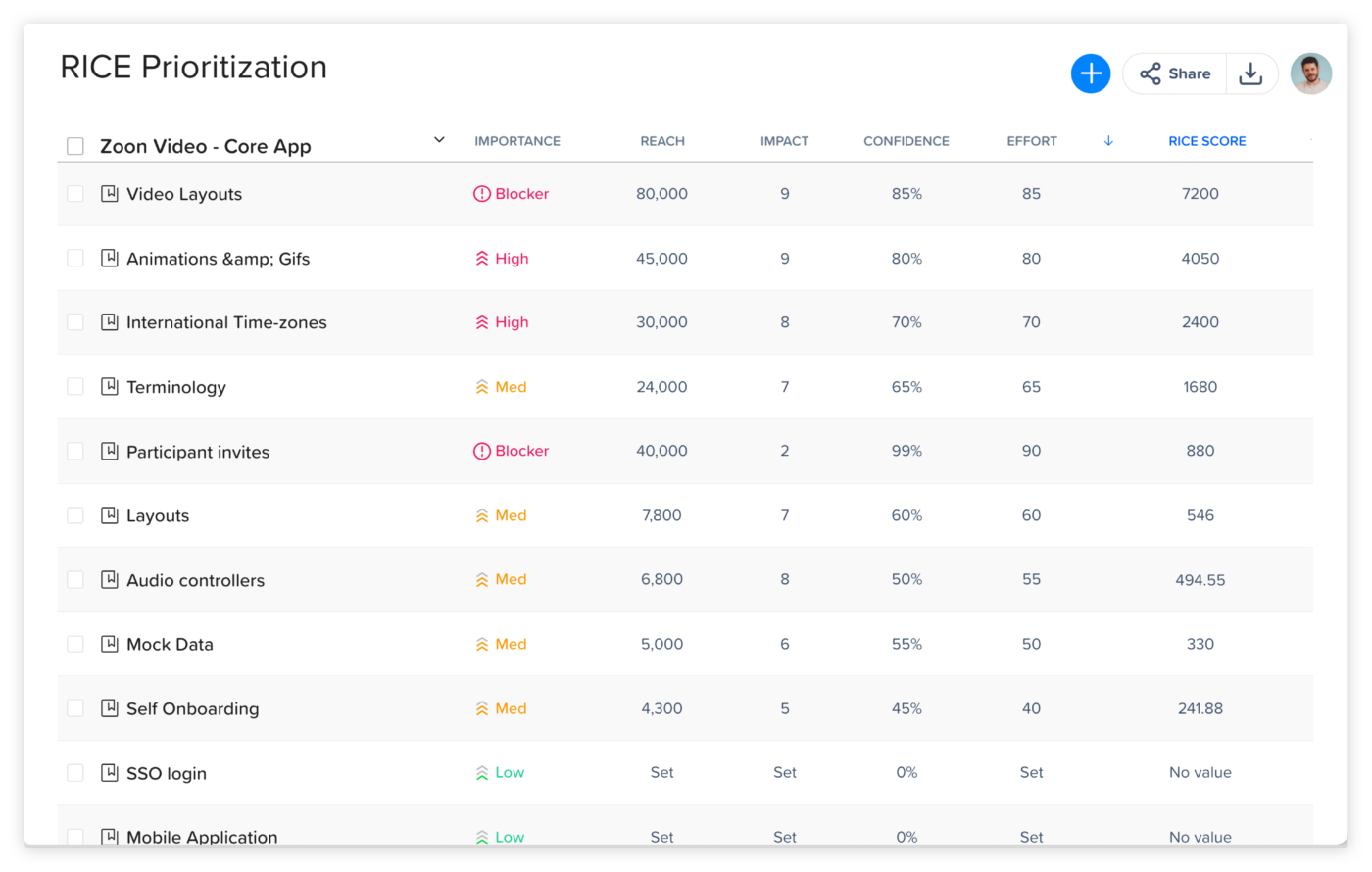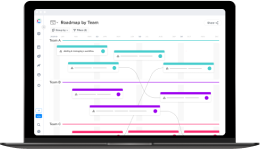RICE prioritization is a proven method for ranking ideas based on Reach, Impact, Confidence, and Effort. By assigning a RICE score to each initiative, teams can apply objective prioritization techniques to decide what to work on next. This RICE framework is especially useful for product managers looking to replace guesswork with data-driven decisions.
Make Objective Decisions with the RICE Prioritization Method
Simplify your decision-making process with the RICE prioritization method, one of the most effective prioritization techniques used by product teams worldwide. Instead of relying on gut feeling or HiPPO (highest paid person’s opinion), use the RICE framework to score each initiative by Reach, Impact, Confidence, and Effort. Quantify how each item contributes to key KPIs like engagement, activation, or conversions, and use the RICE score to rank tasks based on real value. With this structured, data-driven prioritization model, you’ll justify product decisions with clarity and confidence.
Start Rice Prioritizing with Craft.io
Use the RICE prioritization model in Craft.io to simplify your product management workflow, make confident, data-driven decisions, and deliver more value to your users. With RICE, your team can prioritize initiatives with clarity, communicate decisions to stakeholders, and adapt quickly as new information emerges.












































